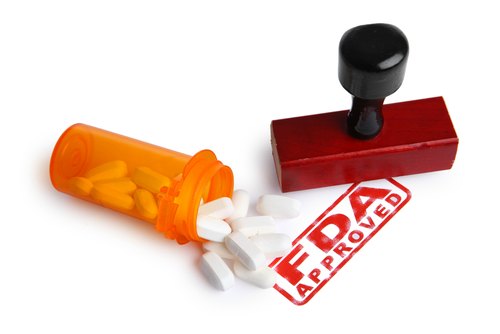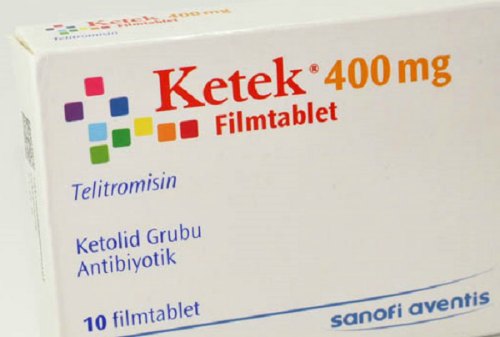Introduction
In a small booklet I found that was written in 2008, entitled ‘More Choices, Better Health, Free to choose experimental drugs’ by Bartley Madden, in the preface written by Vernon Smith he notes that there are 2 types of errors that can be made by the FDA in terms of the drug testing approval process.
Harms that can result, approving a drug that may have safety and efficacy risks, and an untimely approval completion that otherwise could have saved lives.
He goes on to say that balancing these 2 scenarios is politically difficult for the FDA.
The Drug Approval Process of the FDA

The approval process where new drugs must pass the:
- Phase 1 (safety) trial, followed by,
- Phase II (safety and efficacy testing on a small sample of patients) and then,
- Phase III (a clincal drug trial involving many patients)
The average duration to complete these 3 phases is approximately 7 years.
After this, a submission of a new drug application is done, and the FDA review process for this stage begins which takes about 1.5 years. A total of 8.5 years.
The FDA can at this point approve or reject the new drug so there is a temptation of the drug maker to just submit the positive data and bury the negative stuff which of course is illegal, but how does the FDA know that (if) there is buried negative trial documents as has occurred in some cases in the past.
The US court of Appeals of DC upholds the principle that the first and foremost right to make medical decisions are patients and doctors which confirms at least in DC that somebody dying can get access to drugs not yet approved by the FDA.
Mary Pazdur an Oncology nurse at the National Institutes of Health (NIH) had ovarian cancer and all the cancer drugs she took did nothing.
Dr Richard Pazdur the FDA’s oncology chief for the last 16 years and also the husband of Mary.
Despite his powerful position and his access to the best of the best cancer drugs, after 3 years of Mary battling her disease she died at 63 on Nov 24 2015.
Ironically, Dr Pazdur had approved a new cancer drug in 2014 for Ovarian cancer, despite an expert advisory panel who chose not to approve the drug, but Mary did not take the drug because her husband said that the drug was targeted at a form of cancer that was genetically different from hers (Cancer is 95% not genetic so I don’t understand what this means..ovarian cancer is ovarian cancer), although she did take an experimental compound authorized for her by the FDA which was a cancer quackzene.

Apparently the FDA has decision powers to fast track experimental drugs based on compassionate grounds for individual patients, a 1000 or so terminally ill patients that they receive requests for.
This fast tracking was enacted by the Senate Bill S.1956 (ACCESS act) giving the right to seriously ill patients access to ‘promising’ drugs not yet approved.
Fran Visco the president of the National breast cancer coalition commented that
“I am worried that the FDA is losing sight of the incredible importance of making sure DRUGS SAVE LIVES.”
Another comment in this article story stated that
“cancer medicines not only often fail but accelerate their deaths and make their last remaining weeks far more painful and that the FDA focus too much on saving a few at the cost of cutting short the lives of many.”
Dr Henry Miller former FDA regulator said:
What many fail to realize is that a regulatory statute, even if it is not amended, is not static.
When the statute is first enacted, its implementation is generally narrow and limited to the specific requirements of the law, and its impact, therefore, is often modest.
As time goes on, however, each successive generation of administers tends to redefine the scope of jurisdiction and add new requirements.
Seldom does the scope narrow; almost never do requirements disappear.
Regulation begins to take on a life of its own.
And as regulators interpret statutes ever more broadly and comprehensively, they become, in effect, a special interest group with a vested interest in expanded responsibilities, budgets, and empires.
In the absence of effective, conscientious congressional oversight, what develops is an increasingly burdensome and inefficient regulatory system.
Nowhere can this be seen more clearly than in the evolution of premarket licensing mechanisms for drugs.
The current system of oversight of pharmaceutical development includes no mechanism for public accountability … premarket approval severely limits individual freedom of choice.
Personal autonomy is subjugated to government controls.
Citizens are precluded from obtaining products they wish to purchase and have no recourse other than to await government approval.
FDA Past Performance: The Story of Ketek

This is what is written on the drugs.com site, although this drug is now discontinued (it only took the FDA 12 years or so to make sure this drug was dangerous):
- Ketek (telithromycin) is an antibiotic that fights bacteria.
- Ketek is used to treat mild to moderate pneumonia caused by certain types of bacteria.
- Ketek may also be used for purposes not listed in this medication guide.
- Ketek is indicated for the treatment of community-acquired pneumonia (of mild to moderate severity) due to Streptococcus pneumoniae, (including multi-drug resistant S. pneumoniae [MDRSP1]), Haemophilus influenzae, Moraxella catarrhalis, Chlamydophila pneumoniae, or Mycoplasma pneumoniae, for patients 18 years or older.
So Ketek was basically a Ketolide Antibiotic manufactured by Sanofi-Aventis.
This drug was reviewed by the FDA on 3 occasions.
The first review uncovered substantial safety issues that included multiple potential drug reactions, unique visual acuity effects, and Hepatotoxicity.
The FDA requested further safety information specifically a study involving the target patients.
The drug maker complied and completed an unblinded, randomized, controlled trial referred to as Study 3014 comparing incidence rates of Cardiac, Hepatic and Visual Adversity in patients receiving Ketek to those taking Amoxicillin-Clavulanate * (a so called non inferiority study),
* Amoxicillin-Clavulanate is a Combo drug that includes a Amoxicillan Antibiotic and Clavulanate potassium to prevent certain bacteria by inhibiting beta-lactamase, a bacterial generated enzyme that renders the bacterial strain resistant to Amoxicillin antibiotic.
Study 3014 was basically a ‘seeding trial’ involving 1800 physicians who were paid $400/patient and involving 24,000 lab rats…excuse me participants.
The study took 5 months to complete.

After a routine FDA inspection of the physicians who enrolled the most participants of > 400, one physician was discovered to have fabricated patient enrollment and she (Maria “Anne” Kirkman-Campbell ) was given a 57 month prison term in a federal prison.
Nine others were found to have committed serious violations concerning patient enrollment.
In the end 4 practices were referred for criminal investigation.
The FDA managers presented the outcome of study 3014 without revealing the fraud that had been committed citing open criminal investigations that were confidential and the committee voted 11 to 1 for approval of the drug.
As a case in point the FDA could have postponed the study presentation until they were in a position to reveal the compromised integrity of the study.
Then there was a third review (I am not sure why, since they had already approved the drug), but this time they used unreliable foreign post marketing reviews as further safety evidence??; but to use this type of data as further proof of safety, instead of a controlled study is to say the least, questionable.
Furthermore, the criminal investigators insisted that the drug maker be investigated for complicity of fraud, but that was never done, and the post marketing information was reviewed by the FDA without any verification of their accuracy or completeness.
By all accounts (as stated from the book ‘Deadly Medicines and Organised Crime’) the FDA exerted pressure on its scientists to alter the conclusions in favor of the drug, a fatal mistake for some poor soul who lost their life 7 months after the launch.
Non-Inferiority Trials

There is one point to consider here, and that is Ketek was FDA approved, based on Noninferiority trials.
Let us pause for a moment and understand this concept.
Noninferiority trials examine new experimental treatment drugs to see if or not they are unacceptably less efficacious than an existing drug.
This is achieved by using an active control group (a group of participants who receive an existing drug which was Amoxicillin-Clavulanate.), while another group would receive the experimental drug, which in this case was Ketek.
Noninferiority margins are used, so for example let’s say that the existing drug has a treatment response of between 15-30% and the margin set for the trial is 20%.
If the experimental drug meets the 20% margin then the experimental drug is classified as non inferior.
However, the existing drug is known to have a treatment response in some cases of 30% which in some cases makes the experimental drug inferior?.
In essence noninferiority trials are questionable, which now is agreed by trial designers, but back in 2007 when Ketek was being trialed ,noninferiority trials were acceptable.
This meant that the FDA accepted the trials without informing participants of potential serious toxic effects and that the integrity of the trials which were put in question due to discovered fraud was ignored.
FDA: Couvrez Mon âne (Protect thyself)

Within 7 months of Ketek’s launch date of April 1 2004 in Feb 2005, the first death from liver failure occurred in a patient that was treated for a mild respiratory tract infection.
In January 2006 three more cases of liver failure (1 fatal) were reported, resulting in an emergency meeting inside the FDA followed by an announcement that the FDA considered Ketek to be safe….WHAT ???...yes, well we relied on the 3014 study as part evidence of its safety, knowing full well that the study had been compromised…HOW COULD THESE PEOPLE PLAY WITH PEOPLE’S LIVES LIKE THIS?!..
I am sure if a relation of one of the FDA reviewers was a going to take the drug they would have thought twice.
In my opinion the latest would have been Jan 2006 to withdraw this killer.
Congressional Hearings on Ketek

Facing congressional subpoenas and negative publicity, Andrew Von Eschenbach then the FDA commissioner warned FDA reviewers not to discuss the Ketek fiasco outside of the agency. This was June 2006 and reports of another 23 cases of acute severe liver injury and 12 cases of acute liver failure (4 fatal) were received….WHY DID THEY NOT STOP THE BLEEDING, AND RECALL THE DRUG??.
By the end of 2006 Ketek had ‘chalked up’ 53 cases of Hepatotoxic events.
Two on-label conditions ‘Acute Bacterial Sinusitis’ and ‘Acute Exacerbation of Chronic Bronchitis’ that Ketek was used to treat and had previously been demonstrated to be effective for (I am sure I believe that…NOT) were only withdrawn on Feb 12 2007, the day before the congressional hearing on Ketek.
In addition it took the FDA 16 months after the first case was reported (Feb 2005) to relabel Ketek in terms of its risk of being Hepatotoxic (in Aug 2006). In 2005 Ketek sales had reached the $264 million mark (70% of a french made drug sold in the US), and by 2007 6 million prescriptions had been written for this drug.
I wonder how many more people suffered liver injury..more than 53 I am sure.
Ketek Now

You would have thought that after this drug killed people and injured many others, and after the congressional hearings (sounds very grandeur but do they do anything except ask questions and slap people on the wrists) and all of the negative publicity the drug would have immediately been withdrawn.
TO TAKE PEOPLE OUT OF HARM’S WAY. Did they..in 2015?, they were still updating the labeling to warn clinicians..BUT THE FRIGGING DRUG WAS STILL AVAILABLE....how many more people are going to have to die until they eliminate this poison from human consumption.
PEOPLE READING THIS WHO ARE STILL CONSIDERING TAKING PRESCRIPTION DRUGS THEN YOU DESERVE THE CONSEQUENCES.
Finally, in March 2016 Sanofi Aventis decided to permanently discontinue production….PHEW.

Drug Induced Injury from Antibiotics- The CYP450 metabolic enzymes
The common liver injury from Ketek seemed to be Hepatotoxicity.
The body always considers drugs as Xenobiotics (substances foreign to the body) and metabolises the substances to prepare it for elimination (metabolic enzymes are the workhorses for biotransformation that oxidize substances into more polar, inactive metabolites and more water soluble making it easier for the body to eliminate them)
Most tissues in the body are capable of metabolizing chemicals, the liver being the major detox organ has the means to rid the body of all toxins, chemicals and alcohol.
Within the Endoplasmic Reticulum (tubule structures that surround the nucleus of the cell) of liver cells reside a series of enzymes known as Cytochrome P450 enzymes.
The CYP housekeepers, are enzymes that contain red pigmented Heme that have a maximum absorption rate of light of 450nm reduced in the presence of carbon monoxide hence the name 450.
There are >50 CYP450 enzymes where CYP1A2. CYP2C9, CYP2C19,CYP2D6,CYP3A4 and CYP3A5 metabolize 90% of all ingested drugs.
These enzymes reside on the Smooth endoplasmic reticulum ( as opposed to the rough side which contain Ribosomes-the Amino acid builders for protein synthesis ) of Hepatocytes (liver cells) and the luminal epithelium of the small intestine.
It is CYP3A4 that the liver uses to metabolize Telithromycin (Ketek).
Multiple drugs and drug dosage can seriously interfere with this array of metabolizing enzymes causing Inhibition (blocking their metabolizing function), or Inducement (drug action enhancement).
It is known that Telithromycin inhibits both CYP3A4 and CYP3A5 enzymes.
Drugs like Diltiazem (Cardizem. Calcium channel blockers for hypertension), and Itraconazole (Sporanox, an antifungal), and even grapefruit juice inhibit these enzymes as well.
So taking more than one inhibitor causes havoc within the liver.
Most physicians know (or should know) what drugs are inducers and what are inhibitors, if they don’t they can read the package insert label or the FDA website (so that’s why doctors disappear for a moment when you visit them..they checking the FDA website because the package insert label is too small to read..lol).
There are lists on the web (including the FDA website) that show examples of common drug-drug interactions involving the CYP450 enzyme system (So why didn’t the drug trial organizers warn participants of potential multiple drug interaction and potential multiple enzyme inhibition or inducement or a mixture of the two that cause possible interactions /).
For example mixing Amiodarone (Cordarone) a drug that treats Ventricular Tachycardia or Ventricular Fibrillation inhibits CYP2C9 and CYP3A4 with Warfarin (Coumadin) will increase the risk of bleeding because Warfarin needs CYP2C9 to metabolise.
The key issue is that prolonged inhibition can result in Drug Toxicity.
In the case of Telithromycin (Ketek) this is known to be a strong inhibitor of CYP3A4 ( In comparison Grapefruit juice is a moderate inhibitor).
Could this interference with the CYP450 (3A4) have induced the Hepatotoxicity, leading to liver failure, and the multiple drug reaction during the 3014 study ?.
Drug interactions and the CYP450 Enzymes are important since physicians and psychiatrists utilize this family of enzymes to control drug reactions and increase potency of some medications using the inhibitor/inducement relationship.
Take my advice forget the drugs and this gang of experimenting mad men and stick with the grapefruit juice..lol

Osmosis Jones to dispatch. “We got multiple germs – I repeat, multiple germs – comin’ down the windpipe, and if these bad boys hit the bloodstream, we’re gonna be illin’! I’m talkin’ nose-drippin’, chicken soup-drinkin’, rectal thermometer-stickin’ illin’!”
[The Chief asks Jones where he was in their conversation] You were just starting to say how you were giving me …a promotion to Head of Brain Security, I believe. Yep.
[Thrax demands to know who the undercover Jones really is] Who am I? WHO AM I?! A “Bad Booty-Shaken Pickanosis”, yeah, that’s who I am.
[Drix shoves his gun arm into the flu shot’s mouth and Osmosis gets an idea] Uh-oh, you done done it now, Chill. This guy’s a psycho cop. You had your chance to spill it, but it’s too late. This guy just got off the thorazine, and now he’s Cuckoo for Cocoa Puffs! He’s going El Pollo Loco on your crazy behind!
I know sugar pills who cured cancer, because they believed.
Quote from the movie Osmosis Jones 2001
Check out the Previous Article in this series:
https://www.extremehealthacademy.com/selling-sickness-part-1-conventional-medicine-is-a-business/
https://www.extremehealthacademy.com/selling-sickness-part-2-profits-before-health/
https://www.extremehealthacademy.com/selling-sickness-part-3-baffling-the-masses/
https://www.extremehealthacademy.com/selling-sickness-part-4-prostaglandin-drugs/
https://www.extremehealthacademy.com/convential-medicine-part-5-the-business-of-antidepressants/
https://www.extremehealthacademy.com/selling-sickness-part-6-cholesterol-lowering-drugs-part-1/
https://www.extremehealthacademy.com/selling-sickness-part-7-cholesterol-lowering-drugs-part-2/
https://www.extremehealthacademy.com/conventional-medicine-selling-sickness-part-9-the-dangers-of-pcsk9-inhibitors-familial-hypercholesterolemia-fh-and-anti-diabetic-drugs/
References/Acknowledgments:
- Racketeering in Medicine Book James Carter 1992
- FDA Regulator widowed by cancer,help speed drug approval NY Times Jan 2016
- The FDA and the case of Ketek David Ross MD 2007 New England journal of Medicine
- Hepatotoxicity Wikipedia
- Deadly Medicines and Organized crime Book Peter Gotzsche 2013
- Ketek Liver Failure drug Injury Lawsuits Rottenstein Law group
- The effect of Cytochrome P450 Metabolism and drug response interactions and adverse effects Tom Lynch 2007 American Family physician
- Clinical manual of drug interaction Principles for Medical practice G.Wynn, J.Oestenheld, K.Cozza, S.Armstrong Book 2009
- More choices,Better health, free to choose experimental drugs Bartley Madden 2008
- Osmosis Jones 2001 Movie Wikiquote
Author: Eric Malouin